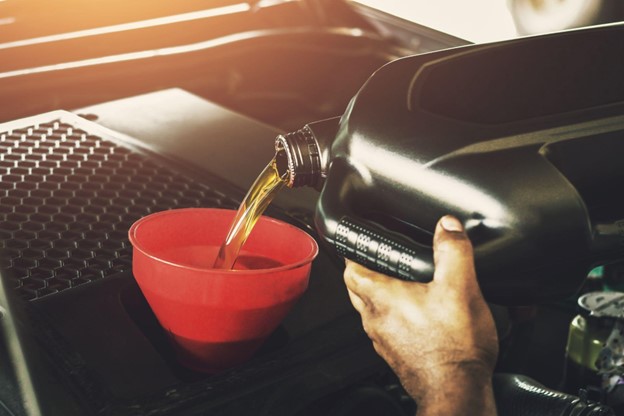Table of Contents
Lubrication is done to reduce friction between two solid moving parts in relative motion by introducing a lubricant between the two surfaces. It helps to improve the life of the components by reducing the wear.
The choice of a type of lubricant depends on the type of application. If the right type of lubricant is selected then it will lead to an extended life of frictional components and a reduction in machine downtime which will result in increased production. It will also lead to lower maintenance costs and save energy.
Factors that should be used to select the right lubricant are the temperature, speed, load, equipment condition whether old or new, compatibility of the lubricant with the material, operating conditions whether continuous or intermittent and types of parts to be lubricated.
There are different types of lubricants: liquid, semi-solid, gaseous and solid. Some of the solid lubricants are Tungsten disulfide (WS2), Hexagonal Boron Nitride (hBN) and Molybdenum Disulfide (MoS2). These are available in powder form and as aerosol sprays. Dry lubricant sprays can be used on metals, rubber, vinyl, wood and more. They can provide high-performance lubrication and corrosion protection in a quick-dry formula.
They can be used for locks, hinges, car doors, windows, latches, fishing equipment, lawn equipment, sports equipment, fans, valves, pulleys and more.

Types of Dry Lubricants
Dry/solid lubricants avoid direct contact between the two surfaces even at high loads. They can also be used as an additive to oil and greases to increase their load-carrying capacity. Different solid lubricants show different properties.
Solid lubricants are used for lubrication where a lubrication film cannot be secured by oils and greases and the operating temperature or the load is high for the grease to stay in position. Solid lubricants can be used in dry powder form or combined with binders to make a lubrication film.
WS2
Tungsten Disulfide (WS2) is the most lubricious material known and can offer excellent dry lubricity unmatched by any other substance. It can be used in high-temperature (-270° C to 650° C), vacuum and high-pressure applications.
WS2 has a layered structure where the bonds within the layers are strong and the layers are held together by weak Van der Waals forces. Due to the weak bonding, it can be easily sheared and leads to a low coefficient of friction.
It is extensively used in the military, automotive and aerospace industries. Now it is available at a price where a superior lubricant can be used and the quality of the final product can be improved. In powder form, WS2 can be added to other lubricants like oil and grease. This helps to enhance the lubricity of the mixture and the high-temperature and high-pressure properties. It can be coated on a surface that has to be lubricated by spraying it with dry pneumatic air. Binders are not required and it can be done at room temperature.
hBN
Hexagonal Boron Nitride (hBN) is a known solid lubricant with a lamellar structure. The bonds within a layer are strong and the layers are held by weak Van der Waal forces. It is known for its low interlayer friction. It is white in colour and also known as ‘White Graphite’.
It is used in a wide range of applications and has the potential to create a protective boundary layer to reduce friction and wear. It is not reactive to a majority of chemicals and is environmentally friendly. It has high-temperature stability and is used in aeronautic and space applications.
hBN powder can be added to other lubricating oils to improve their lubricating properties. It has strong thermal resistance and can be used as an additive in high-temperature lubrication. It can be sprayed or sprinkled on hot surfaces to provide dry lubricity. It can be mixed with resins, alloys, ceramics, plastics and other materials for self-lubricating properties.
MoS2
Molybdenum Disulfide (MoS2) has a lamellar layered structure with a layer of Molybdenum atoms sandwiched between two layers of Sulphur atoms. The bonds within the layer are strong and the layers are held together by weak Van der Waal forces. This allows the layers to slide easily and gives MoS2 lubricating properties.
It can be used as a dry lubricant as an additive to other lubricants like oils and greases and in composite coatings. It does not require a humid environment to perform well and its lubricating properties improve in oxygen-deficient environments.
MoS2 can perform reliably in a wide temperature range. It can function in a vacuum therefore it is used in aerospace and space applications.



